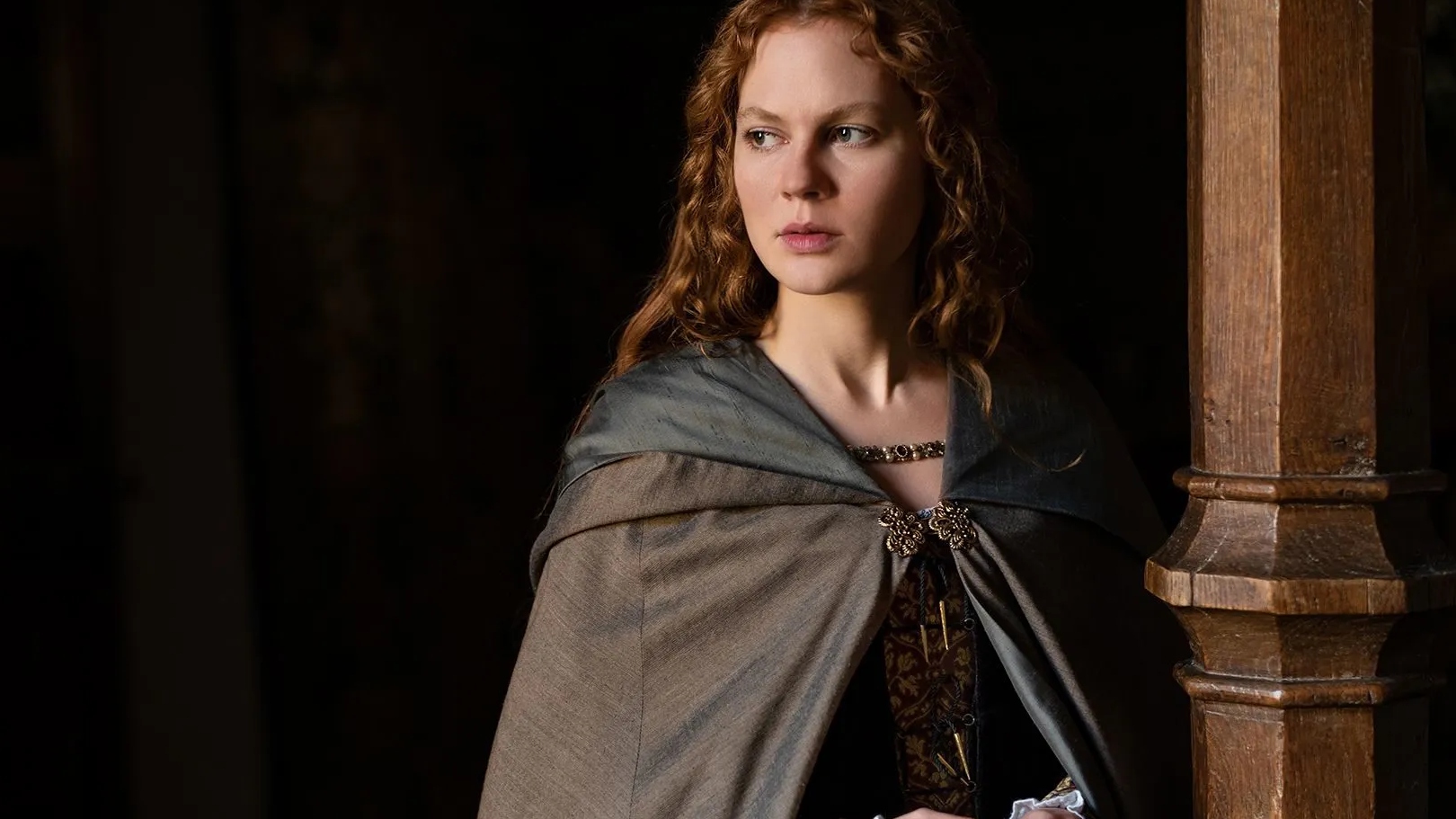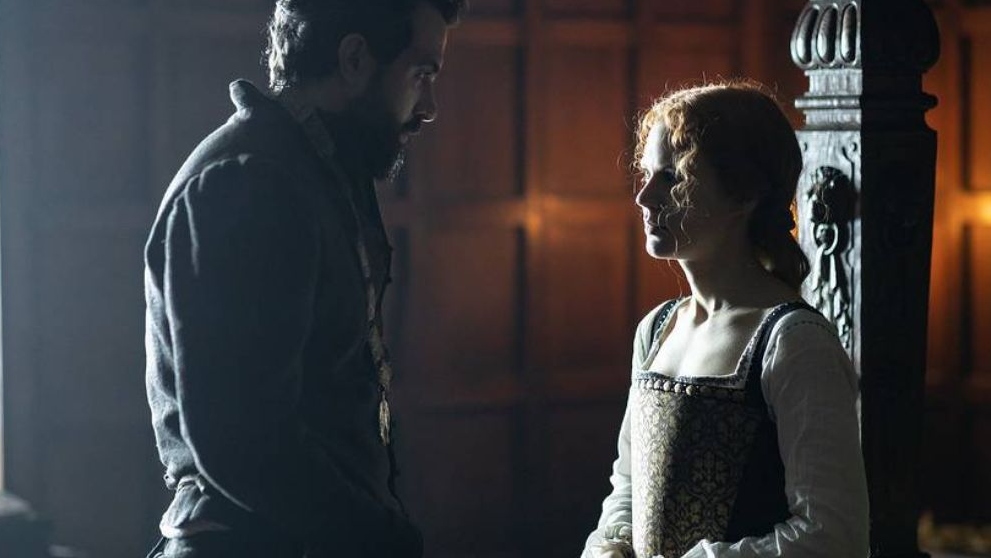Welcome to In Videos Veritas, where accuracy and artistic licence fight it out in the coliseum of audience experience.
The goal of this column is not to lambast a piece of media for failing to deliver perfect “historical accuracy”; something that is impossible to define, impossible to achieve, and rarely ever an acknowledged intention of the creators, anyway. Nor is it my goal to overly praise works that feel authentic to their period but fall flat in other areas. So, what am I doing, you may wonder. To put it simply: it’s interesting to explore how fact and fun interact, with an ultimate focus on what we are willing to include, embellish, or omit from the former in order to attain the latter.
This month, I’m taking a look at Becoming Elizabeth, a historical drama series created by Anya Reiss that ran for one series in 2022. It focuses on the turbulent adolescence of Elizabeth I during her brother Edward VI’s reign.
Truthfully, Becoming Elizabeth depicts so many historical events and figures in such an extensive and interesting way that one feature article alone could never fully cover it, but the following attempt has been enthusiastically made.
Setting the Scene
The period between the death of Henry VIII and Elizabeth I’s accession, featuring the reigns of Edward VI, Lady Jane Grey, and Mary I, is one marked by religious tensions, rebellions, and factional politics. It is also largely ignored in modern media.
The fascination with Henry VIII and his six wives is as prevalent in the 21st Century as ever, with The Tudors, The Other Boleyn Girl, Six the Musical, The Spanish Princess, and Blood, Sex and Royalty plastered all over our feeds. With a new film about Catherine Parr being released this year, and the second series of Wolf Hall currently in production, this fascination is showing no signs of stopping soon.
But why does audience interest so often end with Henry? The bloody, fraught period of history following his death is packed with the elements that most seem to appeal to those devouring endless The Tudors-style content; family executes family, romances bloom and collapse, political and religious strife abounds, and the question of succession looms ever-present. For all its morbidity, it is undeniably addictive.
Becoming Elizabeth makes judicious use of this unexplored era and the figures that populate it, giving as much insight into its ensemble cast of characters as into Elizabeth herself.
And yet, the spectre of Henry VIII haunts this narrative. Sometimes it’s via flashes of his temperament, in the tyrannical tendencies of Edward, in the righteous stubbornness of Mary, in the fiery willfulness of Elizabeth. Sometimes it’s in the reminders that his children experienced turbulent, often tragic childhoods, ignored and indulged in turn, pitted against each other by courtiers grasping for stability. The monstrous monarchy of Henry VIII leaves a sad and desperate legacy, a long shadow that hangs over the wintry setting of Becoming Elizabeth.

The Children of England
At the heart of Becoming Elizabeth is the tension and affection between the Tudor siblings. One of the earliest scenes in the show depicts them herded into a hall together to hear the news of their father’s death, clinging to each other in the face of potential danger.
Mary, daughter of Catherine of Aragon, is thirty years old and unmarried at the outset of the show, living peacefully away from court as a practising Catholic in a country growing more hostile towards her faith. Edward is just nine years old, son of Jane Seymour, he cleaves to his uncles, Edward and Thomas Seymour, as he begins his rule. He is a zealous Protestant. Elizabeth, daughter of the infamous Anne Boleyn, is a teenager, and moves to live with her stepmother, Catherine Parr. Elizabeth, like her brother and stepmother, is Protestant, but her religious outlook is far less overt and polarising than any of her relatives.
The strain of religious difference on the relationship between Mary and Edward is well-documented, and Becoming Elizabeth frequently highlights the intensity of the emotional stakes for the pair. Mary and Edward argue bitterly, and cry in each other’s arms, and never find common ground. Elizabeth’s interactions with both of them are similarly fraught, and handled with great delicacy by the showrunners. Elizabeth learns to play the role of a good sister to Edward, temperate, pious, and biddable, biting her tongue and hiding her independent streak even as he tries to marry her off.
The exploration of Mary and Elizabeth’s dynamic is a show-stealer, perhaps mostly due to Romola Garai’s career-defining performance as Mary. Elizabeth’s mother supplanted Mary’s, incited the formation of the Church of England, and forced Mary to serve Elizabeth with her titles stripped from her. Elizabeth’s mother, as we all know, got beheaded. Both of them mistreated by a father who mistreated their mothers, both of them surrounded by those who would seek to use them or get them out of the way. The huge gulf of difference between the sisters is bridged by so many similarities that each conversation they have in the show crackles with energy.
Elizabeth and Leicester
Becoming Elizabeth takes artistic licence with just how frequently Elizabeth and Robert Dudley, the future Earl of Leicester, might’ve interacted at this time. Yet, it is easy to see why the showrunners chose to fill in such promising gaps in history. We know that Elizabeth and Robert spent time in the Tower during the same period of Mary I’s reign, we know that Robert allegedly sold lands for Elizabeth’s benefit at this time too, and we know about the close bond they shared throughout the rest of their lives. The truth is this period was formative for both of them, often in the worst of ways.
We see Robert go North with his father, John Dudley, to crush Kett’s Rebellion, witnessing mass bloodshed for the first time though still a teenager. His father’s play for power, and subsequent fall, would’ve taught him much about the dangers of being close to the throne.
The teenage Elizabeth is pursued by Thomas Seymour, despite him being over twenty years her senior and married to her stepmother at the time. The show presents this in unrelentingly uncomfortable detail, with Tom Cullen’s Seymour alternately charming and repulsive. However, some scenes with the pair exude a disarming hint of romanticisation, perhaps unavoidable due to the need to cast an actress much older than the real Elizabeth.
The ambiguity of Thomas Seymour and his relationship with Elizabeth is a testament to the difficulty of depicting historical events on screen, where assumptions are made, where a good story might be prioritised over a solid fact, and where all is filtered through modern lenses for a modern audience.

The Dowager Queen
It is a testament to the talent of the screenwriters and cast that you could produce a feature about any of the figures depicted in Becoming Elizabeth. Whilst the show’s takes on John Dudley, Jane Grey, Thomas Seymour, Robert Dudley, and Elizabeth I are vivid; the portrayals of Mary I, Edward VI, Edward Seymour and Catherine Parr are absolutely mesmeric.
In this myriad of superb character studies, perhaps the greatest achievement is the show’s ability to completely overhaul the common media conception of Catherine Parr, the final of Henry VIII’s six wives. Parr is usually shown as a dower matron, patiently tending to Henry in his final days, relegated to the background of the narrative. Becoming Elizabeth gives us a clever, lively, strong-willed Catherine, one who marries the man of her choice less than six months after her previous husband’s death, one who throws a fit when she is not allotted the Queen’s jewels, one who is idolised by her youngest stepchildren.
Jessica Raine’s dazzling performance makes it easy to believe that she was the vivacious young widow who captured Henry’s eye (so young that she may well have been named after Henry’s first wife!). He made her regent of England when he gallivanted off to France, then nearly had her killed because of the strength of her Protestant faith, such was her power and influence.
It is a quirk of the narrative that Catherine could be mistaken for the main character in the first half of Becoming Elizabeth. Yet, it is a real display of skill that almost any of the characters in the show felt just as fully realised, if not more so, as the titular one.
Untimely End
Much overlooked, despite its generally favourable reviews, Becoming Elizabeth was cancelled shortly after its wider release via Channel 4. Its beautiful costumes and cinematography,
almost faultless ensemble cast and gripping narrative were clearly not enough to save it.
Admittedly, you could argue that the show’s endless politics and arguments about the succession, intercut with beheadings, sex scenes, family drama, and forbidden romance simply lacked appeal. However, the success of House of the Dragon and Game of Thrones (both of which draw extensively from English history), suggests instead that Becoming Elizabeth just never reached the right audience.
The loss of a potential second series, one depicting Jane Grey’s nine-day rule, the accession of Bloody” Mary, and Elizabeth’s stint in the Tower, is truly devastating. Nevertheless, series one stands alone as a compelling interpretation of an underexplored period of English history.
In Video Veritas rating
Fact rating: 8/10
Fun rating: 7/10
Overall rating: 7.5/10
Words by Briony Havergill
Some selected sources and recommendations: Children of England: The Heirs of King Henry VIII 1547-1558 (Alison Weir, 1996), Elizabeth the Queen (Alison Weir, 1998), Not Just the Tudors (podcast, 2021-), Rex Factor (podcast, 2010-), The House of Dudley (Joanne Paul, 2022), The Six Wives of Henry VIII (Alison Weir, 1991), The Tudors in Love (Sarah Gristwood, 2021).
Support The Indiependent
We’re trying to raise £200 a month to help cover our operational costs. This includes our ‘Writer of the Month’ awards, where we recognise the amazing work produced by our contributor team. If you’ve enjoyed reading our site, we’d really appreciate it if you could donate to The Indiependent. Whether you can give £1 or £10, you’d be making a huge difference to our small team.
